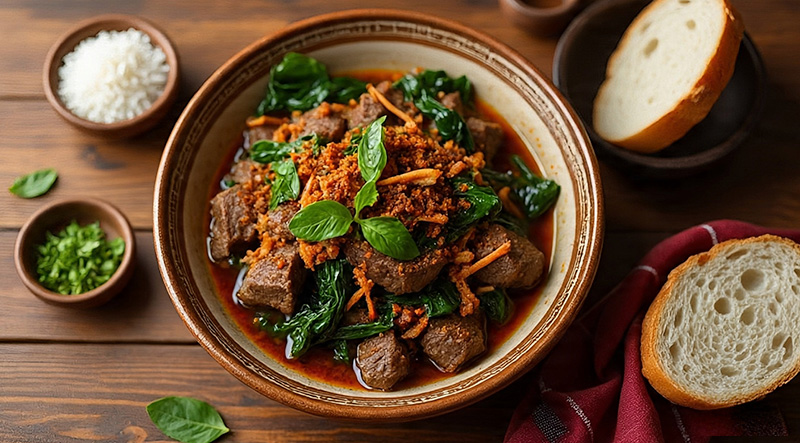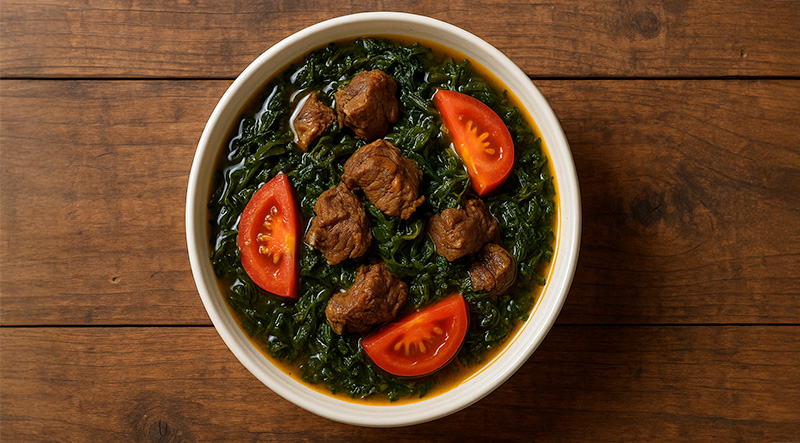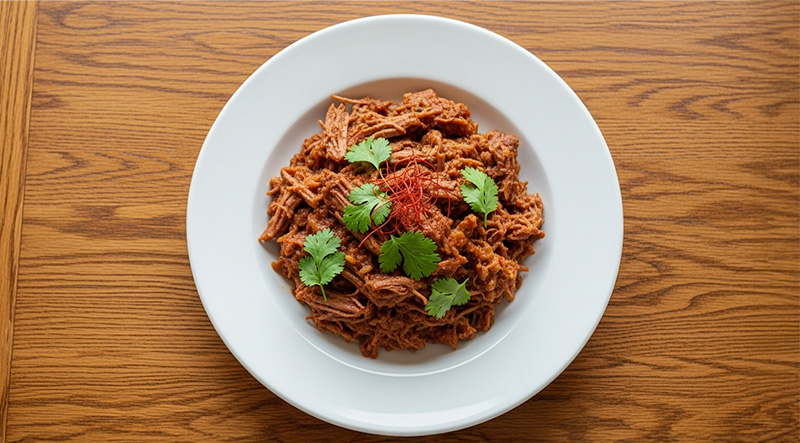Bursting with rich flavors and cultural heritage, Romazava is the heart and soul of Malagasy cuisine. This aromatic stew, often crowned the national dish of Madagascar, blends tender cuts of zebu (or beef), leafy greens like anamamy, and a warming broth infused with ginger, garlic, and local herbs. It's a comforting, nourishing dish that simmers with tradition—served hot and hearty, often alongside rice, and meant to bring people together around the table. One spoonful, and you're tasting the essence of Madagascar. Read More...
The History of Madagascar’s National Dish – Romazava:
Romazava, the beloved national dish of Madagascar, is more than just a flavorful stew—it is a culinary expression of the island’s vibrant cultural heritage and biodiversity. This traditional Malagasy dish, made with a rich broth of braised meat, leafy greens, tomatoes, and local herbs, has been a cornerstone of family meals for generations. But to truly appreciate Romazava, it’s important to explore the history that shaped it.
Roots in Malagasy Tradition:
Madagascar’s cuisine is a unique blend of African, Austronesian, and French influences, a reflection of the island’s diverse population and complex history. The Austronesian settlers who first arrived on the island brought rice cultivation and cooking techniques that still define Malagasy meals today. Over time, African flavors and ingredients, such as leafy greens and root vegetables, were integrated into daily cooking.
Romazava developed as a simple, nutritious dish that could be adapted to available local ingredients. Traditionally prepared with zebu meat (a type of humped cattle introduced from East Africa), Romazava was often cooked slowly over wood fires, allowing the flavors to meld and the meat to become tender. The addition of local greens such as anamamy or paracress (often known for its slightly numbing sensation) gave the dish its signature taste and texture.
A Symbol of Community and Everyday Life:
Romazava has long been a staple of Malagasy households, served with rice at nearly every meal. It is not considered a dish reserved for special occasions, but rather a symbol of daily nourishment and communal living. In villages across Madagascar, families gather around steaming pots of Romazava, using it as a way to connect, share stories, and maintain cultural continuity.
Despite its humble ingredients, the dish is deeply meaningful. The name “Romazava” itself translates roughly to “clear broth” or “light soup,” highlighting the dish’s clean, healthful quality. The simplicity of the recipe allows the freshness of the ingredients—especially the medicinal local greens—to shine through.
Modern-Day Romazava:
Today, Romazava has taken its rightful place as a national culinary treasure. It appears on restaurant menus across Madagascar and even in Malagasy communities abroad. While the traditional recipe remains largely unchanged, some modern adaptations include variations in protein (such as chicken or pork) and spices, depending on regional availability.
Efforts to preserve Malagasy culinary traditions have brought renewed interest in Romazava, both from food scholars and global chefs. It is celebrated in festivals and national holidays, and has been featured in culinary documentaries and food travel shows that highlight Madagascar’s unique food culture.
A Dish That Tells a Story:
Romazava is not just a meal—it’s a narrative in a bowl. It tells the story of Madagascar’s settlers, its agriculture, and the enduring importance of family and tradition. Whether simmered in a rural village pot or plated in a modern kitchen, Romazava continues to represent the flavors, resilience, and heart of the Malagasy people.
Prep the Meat:
Sear the Meat:
Sauté the Aromatics:

Add Tomatoes:
Simmer the Stew:

Add Greens:
Serve:

Tips:
Romazava is the perfect example of comfort food that connects you to the traditions of Madagascar. Earthy, aromatic, and deeply satisfying—this dish is best enjoyed with family and a bowl of fluffy rice.
The total preparation and cooking time for Romazava is approximately 1 hour and 30 minutes. This includes about 15–20 minutes of prep time for chopping meat, vegetables, and aromatics, and around 1 hour to 1 hour and 10 minutes of cooking time, allowing the meat to simmer until tender and the greens to wilt perfectly into the flavorful broth.
A single serving of Romazava, based on the provided recipe, contains approximately 350–400 calories. This estimate includes the beef (around 250–300 calories depending on fat content), oil for sautéing (about 60–80 calories), and the vegetables and aromatics (adding roughly 30–50 calories). If served with one cup of white rice (optional but traditional), add an additional 200 calories, bringing the total closer to 550–600 calories per serving with rice.







